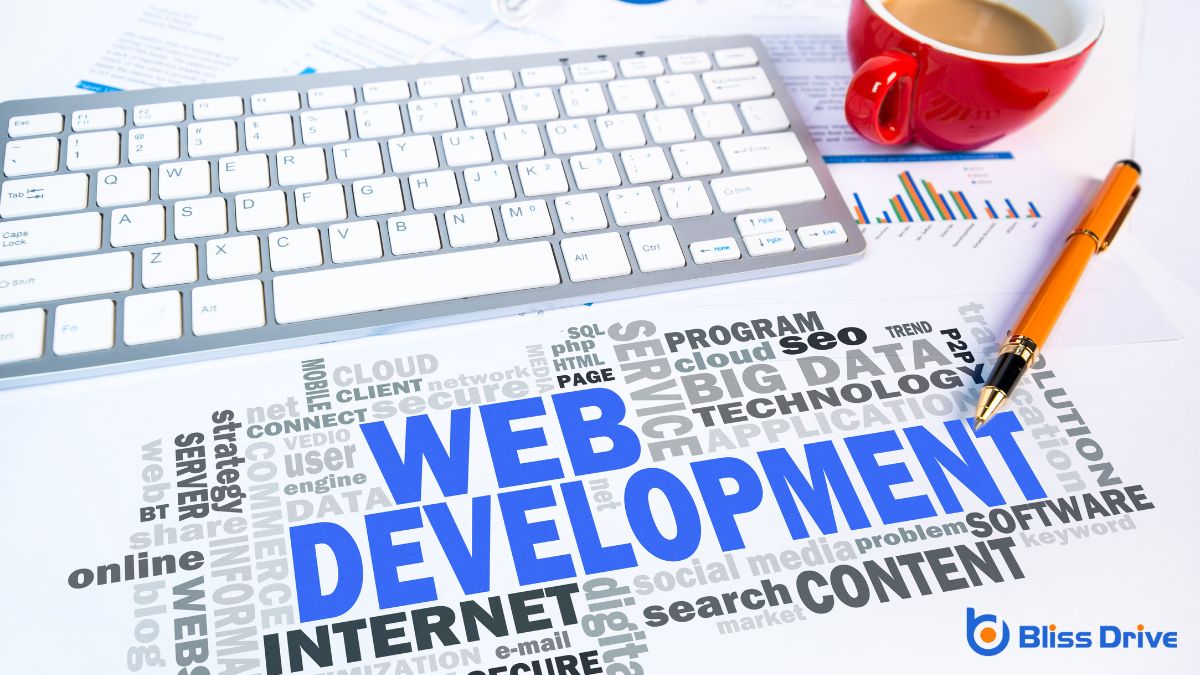Digital Marketing Services
Learn More About Us

As we consider whether AI will replace web developers, it’s crucial to recognize the dynamic landscape we're traversing. While AI tools are advancing rapidly, offering impressive automationUsing software to send emails automatically based on predefined triggers and schedules. and efficiency, there's more to this story than just technological prowess. The unique blend of creativity, empathy, and problem-solving that human developers bring to the table can't be easily replicated by machines. So, where does this leave us in the evolving world of web development?

As technology evolves, we're witnessing a transformative shift in web development driven by the integration of artificial intelligence. AI's rise in this field isn't just shaping how websites are built but also redefining our roles as developers.
We're adopting AI to automate repetitive tasks, streamline workflows, and improve user experiences. This shift allows us to focus more on creative problem-solving and innovation, rather than mundane coding.
AI tools can generate code snippets, optimize design elements, and even predict user behavior. By leveraging these capabilities, we're enhancing efficiency and delivering more personalized, dynamic web experiences.
However, it’s essential to remember AI is a tool that augments our skills, not a replacement for our expertise. We need to adapt and learn alongside these advancements to remain relevant.
The momentum of AI in web development naturally leads us to explore the current capabilities of these advanced tools. AI tools can now generate basic website layouts, automate repetitive coding tasks, and even suggest improvements in code efficiency.
They shine in data processing, analyzing user behavior, and personalizing user experiences. By leveraging machine learningA subset of artificial intelligence where computers use data to learn and make decisions., these tools can predict trends and enhance content delivery.
We've seen AI excel at automating testing, ensuring our websites are more reliable and secure. However, they still rely on predefined algorithms and require human oversight to function efficiently.
While AI can handle routine tasks with precision, it struggles with context, nuance, and complex decision-making. Consequently, understanding the boundaries of AI's current capabilities helps us appreciate its role in enhancing our work, not replacing it.
Although AI has made impressive strides in web development, we can't overlook the irreplaceable value of the human touch, especially in creativity and problem-solving.
We, as humans, bring a unique perspective that machines can't replicate. Our ability to innovate and think outside the box allows us to create engaging user experiences and tailor solutions to specific needs.
Problem-solving often requires intuition and empathy, qualities that AI lacks. When we face challenges, our understanding of context and nuance guides us to solutions that aren't always straightforward.
Collaborating with AI, we enhance its capabilities, ensuring that the final product not only functions efficiently but also resonates with users.
Let's embrace technology while celebrating our creativity and problem-solving skills.
As we explore AI's impact on web development, we see it transforming our workflows by automating repetitive coding tasks, which frees up our time for more creative pursuits.
AI tools also enhance code quality assurance, helping us catch errors faster and ensuring our projects maintain high standards.
Additionally, by accelerating front-end design, AI enables us to deliver visually appealing and functional websites more efficiently.
When we think about the potential of AI in web development, automating repetitive coding tasks stands out as a game-changer.
We all know that coding can be time-consuming and sometimes tedious, especially when it involves repetitive tasks. AI helps us by taking over these mundane parts, allowing us to focus on more complex and creative aspects.
Here's where AI shines:
Beyond automating repetitive tasks, AI considerably boosts the quality assurance phase of web development. We understand how vital it is to guarantee our code is error-free and efficient. AI tools help us identify bugs, vulnerabilities, and inconsistencies much faster than manual reviews.
With machine learning models, they can predict potential issues based on past data, allowing us to address them proactively.
Moreover, AI-driven code analyzers offerThe specific product or service being promoted by affiliates. real-time feedback, helping us maintain best practices and adhere to coding standards. These tools not only save time but also enhance our confidence in delivering robust, high-quality web applications.
While front-end design has always been a creative endeavor, AI is revolutionizing how we approach it by streamlining development processes.
We’re witnessing a shift where AI tools assist us in creating more efficient workflows. These tools aren’t replacing our creativity; instead, they’re enhancing our ability to bring ideas to life more efficiently.
Consider how AI helps us:
Let's focus on the heart of web development: the user experience.
We must prioritize user needs, ensuring our designs are intuitive and connect emotionally with our audience.
To truly prioritize user needs, we must adopt a human-centric approach that places user experience at the forefront of web development. By doing so, we guarantee our websites aren't only functional but also engaging and intuitive.
It’s crucial to listen and respond to what users truly want and need.
Prioritizing user needs requires ongoing dedication and empathy.
Crafting intuitive design principles begins with understanding how users interact with our web interfaces. We must place ourselves in their shoes, recognizing that every click and scroll should feel natural. Our goal is to anticipate user needs, ensuring that maneuvering our site feels seamless.
By simplifying pathways and minimizing cognitive load, we create an experience that's not only efficient but enjoyable.
Let's focus on creating clear, consistent navigation. Users shouldn't have to guess where to find information—our design should guide them effortlessly.
We emphasize readability, using fonts and colors that enhance clarity. Feedback is essential; users need immediate responses to their actions.
As we refine these principles, we make our interfaces more accessible, ensuring that all users feel welcomed and understood.
As we explore the importance of emotional connection in user experience, it’s crucial to recognize that interfaces aren't just functional tools; they're the bridge between humans and technology.
We must design experiences that resonate emotionally, fostering a sense of trust and engagementThe interactions that users have with a brand’s content on social media.. Emotional connections can transform a mundane user journey into a memorable one, encouraging users to return.
To achieve this, we should focus on:
While the landscape of web development evolves, the synergy between AI and human developers becomes increasingly essential. Together, we can harness AI's speed and efficiency, allowing us to focus on creativity, strategy, and problem-solving.
AI tools streamline routine tasks, giving us more time to innovate and create meaningful user experiences. By collaborating, we leverage AI's ability to analyze vast amounts of data, generating insights we might miss alone.
This partnership enhances our capabilities, leading to better decision-making and more robust solutions. We must embrace AI as a valuable team member, not a competitor.
Our collaboration guarantees that the human touch remains in our projects, blending technology with empathy, creativity, and intuition—qualities AI can't replicate. Together, we shape the future of web development.
Despite the powerful synergy between AI and human developers, it's important to recognize the limitations AI faces in web development.
While AI can automate routine tasks and enhance efficiency, it struggles with creative and context-sensitive aspects that require human intuition.
Let's explore some key limitations:
These limitations remind us that human oversight and creativity are essential in crafting websites that truly meet user needs.
Balancing AI's capabilities with human insight remains important.

In this rapidly evolving digital landscape, the future for web developers in an AI-driven world brims with exciting opportunities.
As AI takes on more repetitive tasks, we can focus on creativity and innovation. Our skills in problem-solving and design become even more valuable when paired with AI's efficiency and power.
We’re not just maintaining existing sites; we’re enhancing user experiences and crafting personalized, dynamic contentEmail content that changes based on the recipient's preferences or behavior..
AI tools can help us predict user behavior and automate testing, allowing us to refine our work quickly.
But remember, AI won't replace the human touch in understanding user needs and emotions.
To sum up, we shouldn't fear AI replacing web developers; instead, we should embrace the transformative partnership it offers. While AI handles repetitive tasks and enhances efficiency, it's our creativity and problem-solving skills that truly shine in crafting personalized user experiences. By collaborating with AI, we can push the boundaries of innovation and deliver superior outcomes. Let's focus on leveraging AI's strengths while valuing human insight, ensuring a bright future for web development in the AI era.
